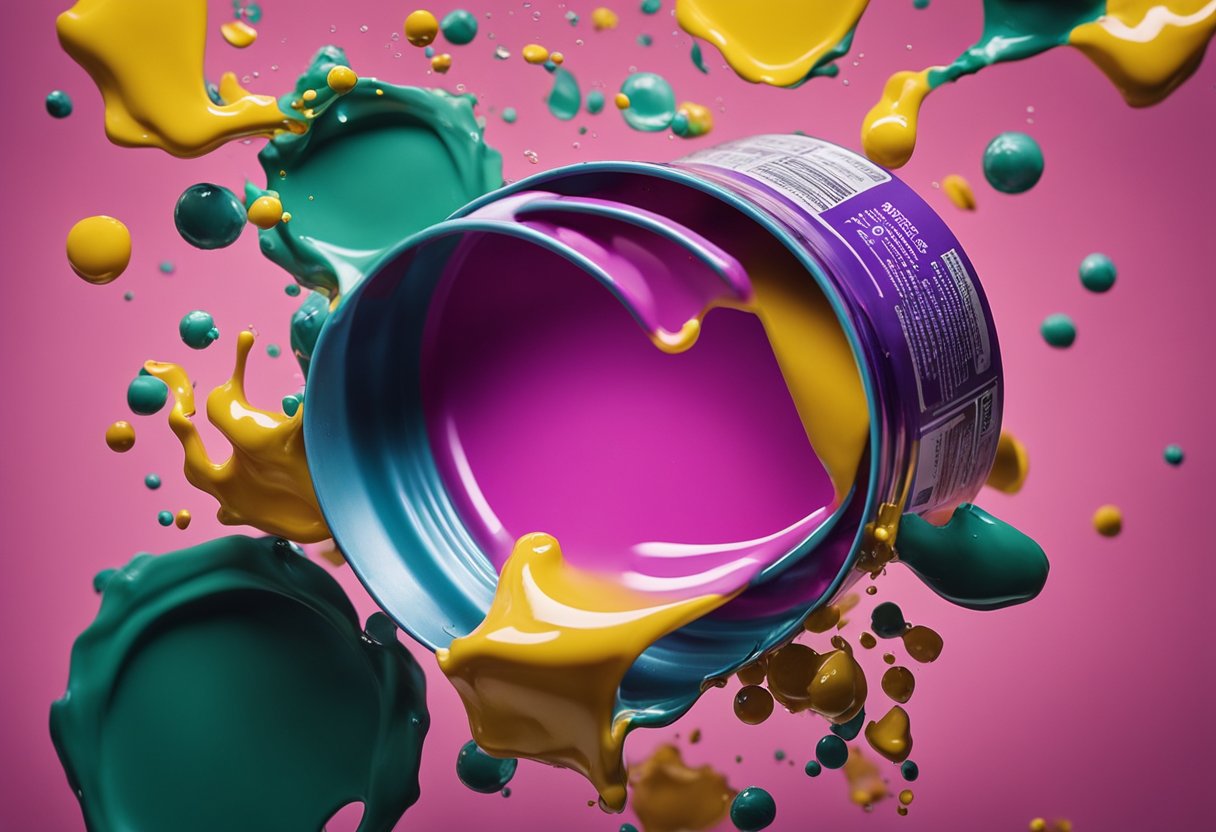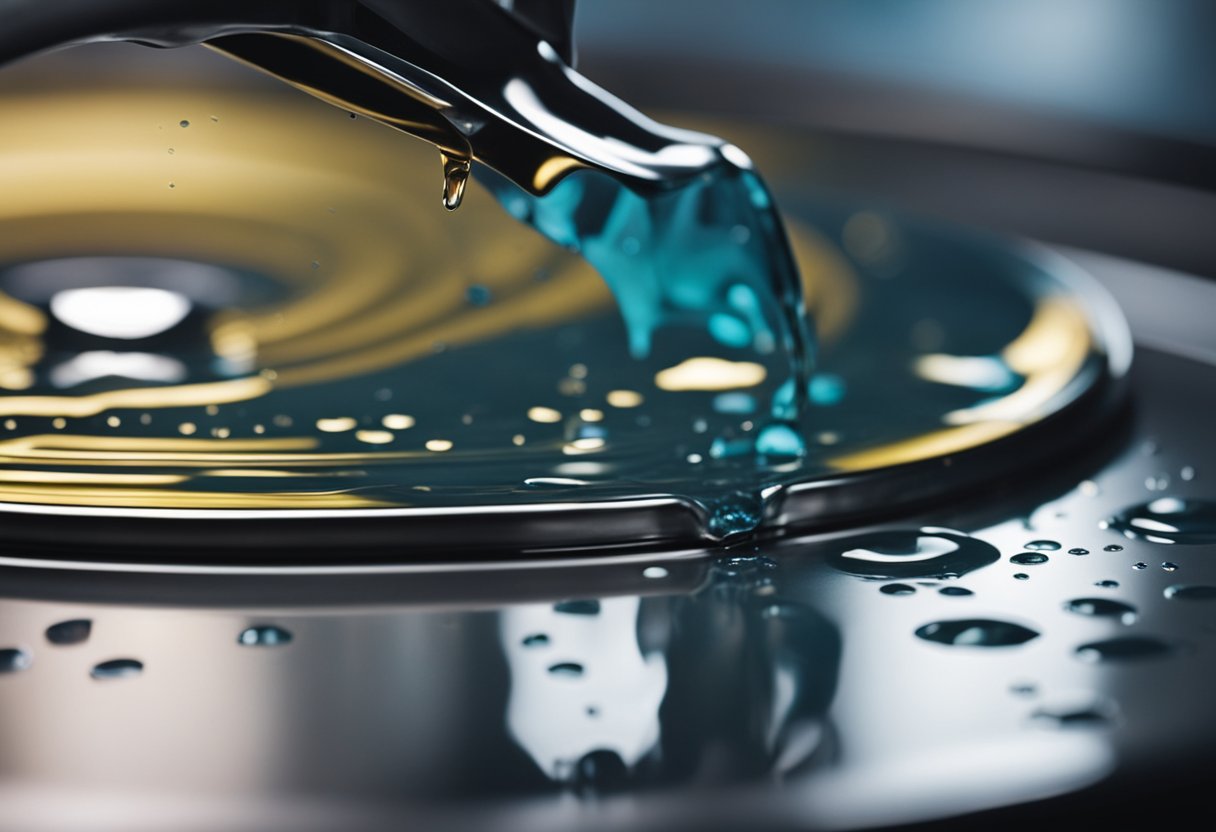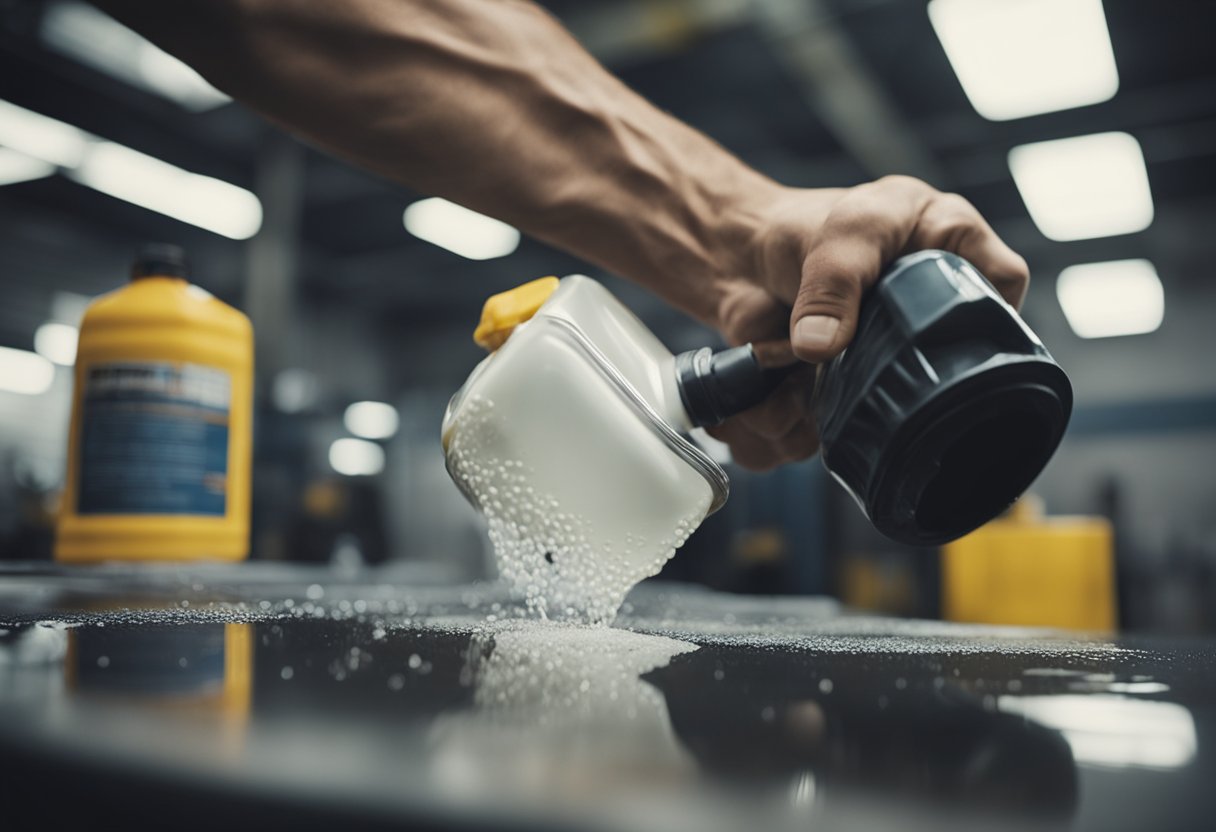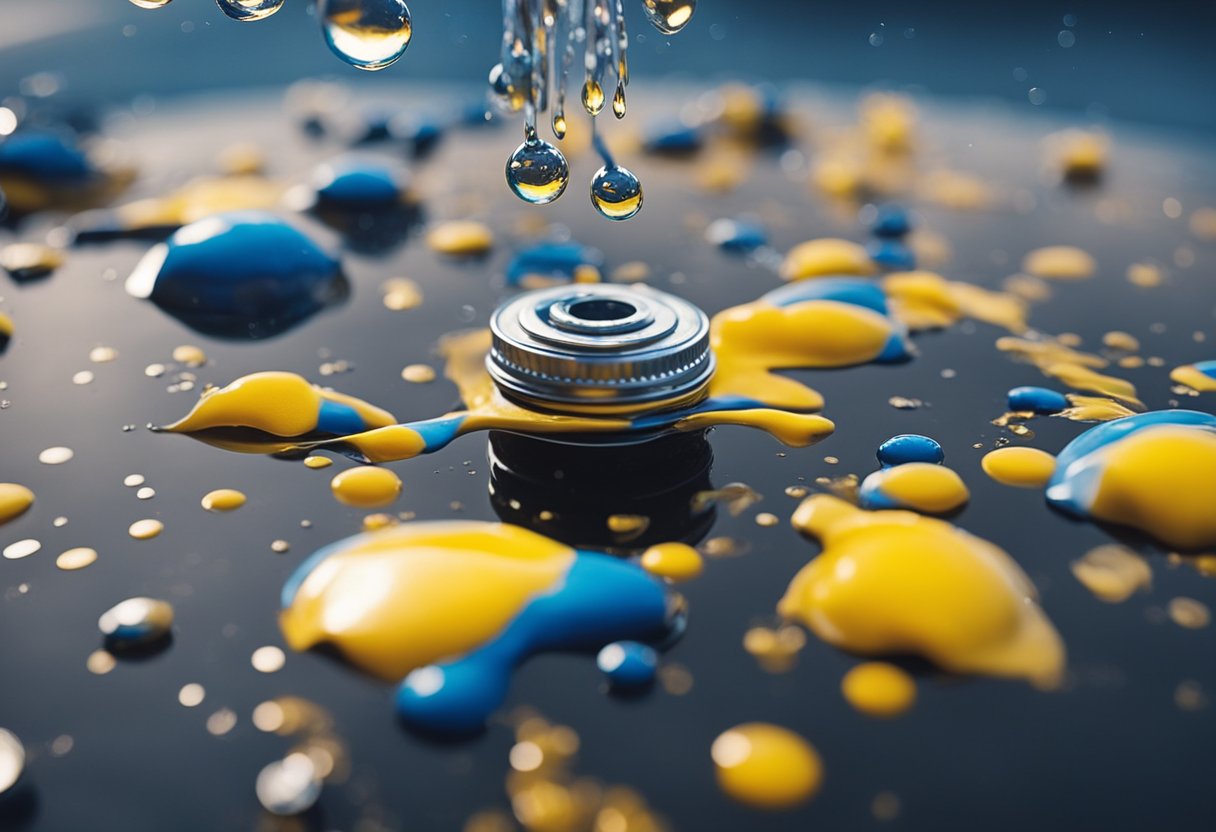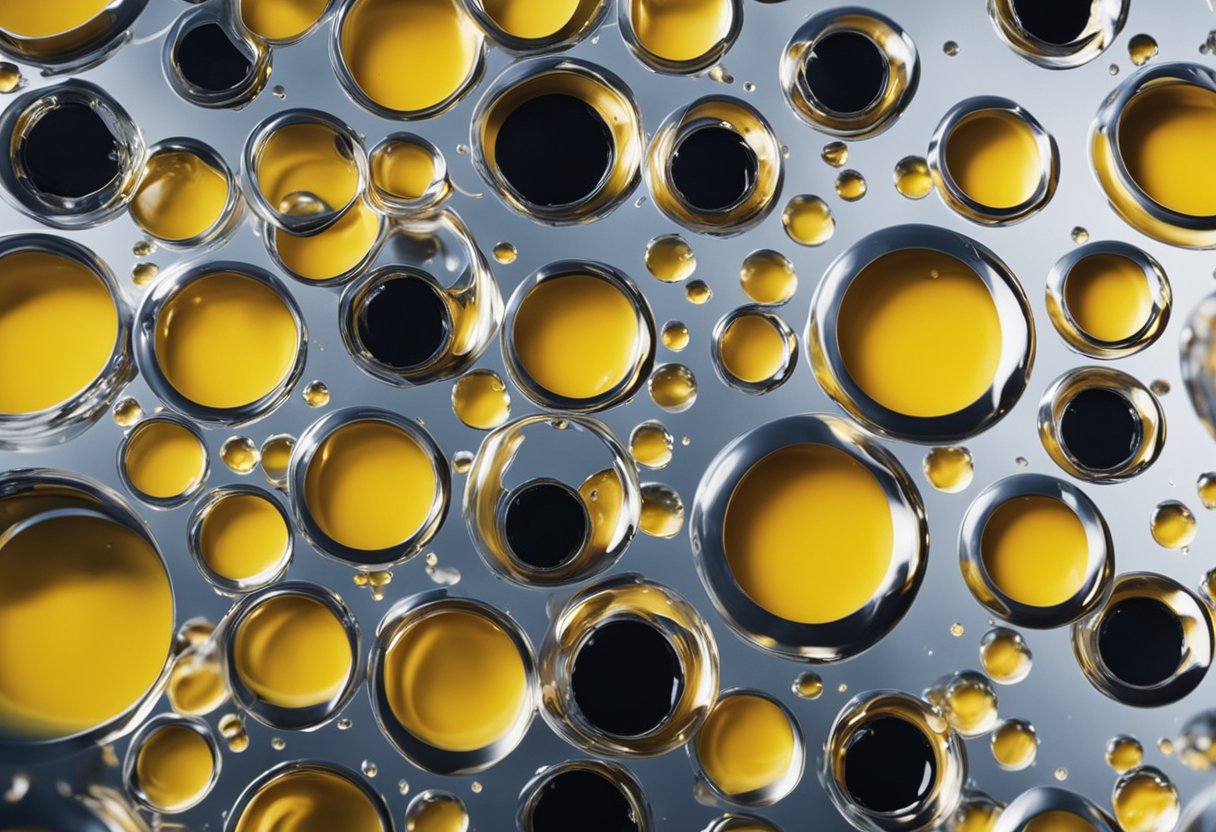I have done some research on the use of brake fluid for removing paint, and in this article, I will share what I’ve learned. Brake fluid is typically used in a car’s hydraulic braking system to boost the force to your brake pedal, which converts into the required pressure on your brakes. However, it turns out that brake fluid can also be used as a paint remover.
When it comes to paint removal, brake fluid is an effective solvent that can strip off paint from a variety of surfaces. However, it’s not without its downsides. Brake fluid can damage certain materials, and it’s essential to take precautions when using it. In this article, I’ll go over the effects of brake fluid on different surfaces, the cleaning process after accidental spills, damages caused by brake fluid, and prevention and precautions. I’ll also discuss professional assistance and alternatives to brake fluid for paint removal.
Key Takeaways
- Brake fluid can be used as a paint remover, but it can also cause damage to certain materials.
- It’s essential to take precautions when using brake fluid and to clean up spills promptly.
- Professional assistance and alternatives to brake fluid are available for those who prefer not to use it.
What Is Brake Fluid?
As an automotive technician, I often get asked about the properties and uses of brake fluid. Brake fluid is a type of hydraulic fluid that is used in a car’s hydraulic braking system. It is responsible for transmitting the force from the brake pedal to the brake system, which then applies pressure to the brake pads or shoes, ultimately bringing the vehicle to a stop.
Brake fluid is typically made up of a mixture of glycol and other additives that help to increase its boiling point, prevent corrosion, and maintain its viscosity over a wide range of temperatures. There are two main types of brake fluid: DOT 3 and DOT 4. DOT 3 is the most common type of brake fluid used in vehicles today, while DOT 4 is typically used in high-performance or heavy-duty vehicles.
The brake fluid reservoir, located under the hood of the car, is where the brake fluid is stored. It is important to check the brake fluid level regularly and top it up as needed to ensure that the brake system is functioning properly. It is also important to use the correct type of brake fluid as specified by the manufacturer, as using the wrong type of fluid can cause damage to the brake system.
In summary, brake fluid is a crucial component of a car’s braking system, responsible for transmitting the force from the brake pedal to the brake system. It is typically made up of glycol and other additives, with two main types available: DOT 3 and DOT 4. The brake fluid reservoir is where the brake fluid is stored, and it is important to check the fluid level regularly and use the correct type of fluid as specified by the manufacturer.
Brake Fluid as a Paint Remover
https://www.youtube.com/watch?v=nUnzmANcu_s&embed=true
As someone who has worked on cars for many years, I can confidently say that brake fluid can be an effective paint remover. When brake fluid comes into contact with paint, it can cause a chemical reaction that breaks down the paint and makes it easier to remove.
One of the advantages of using brake fluid as a paint remover is that it is readily available and relatively inexpensive. You can find brake fluid at any auto parts store, and it is much cheaper than many other types of paint removers or paint strippers.
To use brake fluid as a paint remover, you will need to apply it to the surface of the painted area and let it sit for a period of time. The amount of time required will vary depending on the type of paint and the thickness of the layer. Once the brake fluid has had time to work, you can use a scraper or wire brush to remove the paint.
It is important to note that brake fluid is a powerful chemical and should be handled with care. You should always wear gloves and eye protection when working with brake fluid. Additionally, you should only use brake fluid in a well-ventilated area, as the fumes can be harmful if inhaled.
While brake fluid can be an effective paint remover, it may not work in all situations. For example, it may not be effective on certain types of paint, such as enamel or lacquer. Additionally, it may not be effective on surfaces that have been painted multiple times or that have been painted with a very thick layer of paint.
In summary, brake fluid can be an effective and inexpensive option for removing paint from surfaces. However, it should be used with caution and may not work in all situations.
Effects of Brake Fluid on Different Surfaces
https://www.youtube.com/watch?v=rhDCHw6M5nM&embed=true
As an experienced mechanic, I have seen first-hand how brake fluid can affect different surfaces. While brake fluid is an essential component of a car’s braking system, it can cause damage to certain materials if left on for an extended period.
Car Paint
Car paint is the most commonly affected surface when it comes to brake fluid spills. If brake fluid is left on car paint for too long, it can cause the paint to loosen and eventually peel off. This is because brake fluid contains glycol, which can damage the coating layer of the paint.
To prevent damage to car paint, it’s important to immediately clean up any brake fluid spills. Use a clean cloth to wipe away the brake fluid, and then wash the affected area with soap and water. If the paint has already been damaged, it may need to be repainted.
Metal Surfaces
Brake fluid can also cause damage to metal surfaces, including metallic alloys. If brake fluid is left on metal surfaces for too long, it can cause corrosion and pitting. This can weaken the metal and cause it to fail over time.
To prevent damage to metal surfaces, it’s important to immediately clean up any brake fluid spills. Use a clean cloth to wipe away the brake fluid, and then wash the affected area with soap and water. If the metal has already been damaged, it may need to be repaired or replaced.
Plastic Surfaces
While plastic surfaces are generally more resistant to brake fluid than car paint or metal, they can still be damaged if left in contact with brake fluid for an extended period. Brake fluid can cause plastic to become brittle and crack over time.
To prevent damage to plastic surfaces, it’s important to immediately clean up any brake fluid spills. Use a clean cloth to wipe away the brake fluid, and then wash the affected area with soap and water. If the plastic has already been damaged, it may need to be replaced.
In conclusion, brake fluid can cause damage to several different surfaces if left in contact for too long. To prevent damage, it’s important to immediately clean up any brake fluid spills and wash the affected area with soap and water. If damage has already occurred, the affected surface may need to be repaired or replaced.
Cleaning Process After Accidental Spills
https://www.youtube.com/watch?v=Rxvu4_MUtJ4&embed=true
As a car owner, I know how frustrating it can be to accidentally spill brake fluid on the car’s paint. However, it is essential to clean up the spill as soon as possible to prevent any damage to the car’s paint. In this section, I will outline the cleaning process to follow after accidental spills.
Step 1: Blot Up the Fluid Immediately
The first step is to blot up the brake fluid immediately using a paper towel or rag. Use the smooth side of the towel or rag to avoid scratching the paint and be careful not to rub too hard. According to Badell’s Collision, if the brake fluid stays on the car paint for about five to ten minutes, the clear coat that provides protection to the underlying paint starts to weaken. Dull marks may begin to appear on the paint surface, signaling the commencement of damage.
Step 2: Rinse the Affected Area with Water
After blotting up the excess fluid, rinse the affected area with water immediately. The water will help to dilute the brake fluid and prevent it from causing any damage to the paint. If possible, use a pressure washer to rinse the area thoroughly. However, be careful not to use too much pressure as it can damage the paint.
Step 3: Clean the Affected Area with Detergent
After rinsing the area with water, it’s time to clean the affected area with detergent. Use a car wash detergent or soap to clean the area thoroughly. According to Clean Sensei, it is important to gather all the necessary supplies before starting the cleaning process. This may include cleaning solutions, microfiber cloths, mop, broom, vacuum cleaner, gloves, and any other tools specific to the cleaning task at hand.
Step 4: Rinse the Area Again
After cleaning the affected area with detergent, rinse the area again with water to remove any soap residue. Use a pressure washer if possible to ensure that all the soap is removed.
Step 5: Blot the Area Dry
Finally, blot the area dry with a clean towel or rag. Make sure that the area is completely dry before applying any wax or polish to the paint.
In conclusion, following these steps will help to prevent any damage to the car’s paint after an accidental brake fluid spill. Remember to act quickly, rinse the area with water, clean the area with detergent, rinse the area again, and blot the area dry.
Damages Caused by Brake Fluid
https://www.youtube.com/watch?v=GePNpM5iwd0&embed=true
As a car owner, I know that brake fluid is a necessary component of my car’s hydraulic braking system. However, what I didn’t know until recently is that brake fluid can cause severe damage to the car’s paint. This is because brake fluid contains glycol, which can have a damaging effect on the car’s clear coat and paint.
When brake fluid comes into contact with the car’s paint, it can cause discoloration, corrosion, and even rust. The damage caused by brake fluid can be extensive and can lead to costly repairs. It is important to note that the damage caused by brake fluid may not be immediately visible, but it can manifest over time.
The damaging effect of brake fluid on car paint is due to the chemical makeup of the liquid. When glycol molecules in brake fluid mix with the car’s paint, it creates a chemical reaction that can strip the clear coat and damage the paint. The longer the brake fluid sits on the car’s paint, the more severe the damage can be.
To prevent damage caused by brake fluid, it is important to clean any spills immediately. If brake fluid does come into contact with the car’s paint, it is important to remove it as soon as possible. There are a few methods for removing brake fluid from car paint, including using a clay bar, a specialized cleaner, or a mixture of baking soda and water.
In conclusion, brake fluid can have a damaging effect on car paint and should be handled with care. It is important to take preventative measures to avoid damage, such as cleaning spills immediately and removing brake fluid from car paint as soon as possible.
Prevention and Precautions
As a car owner, it’s important to take precautions to prevent accidental spills of brake fluid on your car’s paint. Ethylene glycol, a component of brake fluid, can cause significant damage to your car’s paint if left unattended. Here are some measures you can take to prevent spills and minimize damage in case of a spill:
- Always handle brake fluid with care. It’s highly corrosive and can cause skin irritation and damage to the eyes. Wear protective gloves and goggles when handling brake fluid.
- Use a funnel when pouring brake fluid into the reservoir to prevent spillage.
- Keep a clean rag or paper towel handy to wipe up any spills immediately. Brake fluid starts to damage paint within minutes, so it’s important to clean it up as soon as possible.
- Store brake fluid in a cool, dry place away from sunlight and heat sources. Exposure to heat can cause brake fluid to expand and leak, leading to spills.
In case of spills, here’s what you can do to minimize damage:
- Act quickly. The longer brake fluid sits on your car’s paint, the more damage it can cause.
- Use a clean rag or paper towel to blot up as much of the brake fluid as possible. Do not rub or wipe the area, as this can spread the brake fluid and cause more damage.
- Rinse the affected area with water to dilute the brake fluid and prevent further damage.
- Use a paint-safe cleaner to remove any remaining brake fluid residue. Test the cleaner on a small, inconspicuous area first to ensure it doesn’t damage the paint.
By taking these precautions and acting quickly in case of spills, you can minimize the damage caused by brake fluid on your car’s paint.
Professional Assistance
If you are not confident in your ability to remove paint from your car using brake fluid, it is recommended that you seek professional assistance. A professional mechanic will have the necessary tools and expertise to safely and effectively remove the paint without causing damage to your car’s surface.
One advantage of seeking professional assistance is that they can perform expert color matching to ensure that the newly painted area matches the rest of your car’s paint. This is especially important if you have a unique or custom paint job on your car.
When choosing a professional mechanic to assist you with removing paint from your car, it is important to do your research and choose a reputable and experienced mechanic. Look for reviews and recommendations from previous customers to ensure that you are choosing a mechanic who has a track record of providing high-quality service.
Overall, seeking professional assistance can be a wise choice if you are not confident in your ability to remove paint from your car using brake fluid. A professional mechanic can provide expert color matching and ensure that the job is done safely and effectively.
Alternatives to Brake Fluid for Paint Removal
While brake fluid can be an effective paint remover, there are other alternatives available that may be more suitable for certain situations. Here are some options to consider:
Isopropyl Alcohol
Isopropyl alcohol, also known as rubbing alcohol, is a commonly used solvent for cleaning and disinfecting surfaces. It can also be used to remove paint, especially when dealing with small areas or delicate surfaces. To use isopropyl alcohol for paint removal, simply apply it to the affected area and let it sit for a few minutes. Then, use a scraper or abrasive pad to remove the paint.
Harsh Paint Strippers
Harsh paint strippers are powerful solvents that can quickly and effectively remove paint from surfaces. However, they can also be dangerous to use and may require special safety precautions. Additionally, some harsh paint strippers may not be suitable for use on certain surfaces, such as those made of plastic or rubber.
Lead Paint
If you are dealing with lead paint, it is important to take extra precautions to ensure your safety and the safety of those around you. Lead paint can be particularly hazardous when it is being removed, as it can release harmful dust and particles into the air. It is recommended to use a professional lead paint removal service in these situations.
Spray Paint
Spray paint can be particularly difficult to remove, especially if it has been allowed to dry for an extended period of time. In these situations, it may be necessary to use a combination of solvents and abrasives to remove the paint. It is important to test any solvents or abrasives on a small, inconspicuous area before applying them to the entire affected surface.
Overall, there are a variety of options available for removing paint from surfaces. The best option will depend on the type of paint, the surface being treated, and the specific circumstances of the situation. As always, it is important to follow all safety precautions and manufacturer instructions when using any type of paint remover.
Frequently Asked Questions
Can brake fluid remove paint from wood?
No, brake fluid should not be used on wood surfaces as it can cause damage to the wood. Brake fluid is designed for use on metal surfaces in a car’s hydraulic braking system.
Does brake fluid remove paint from plastic?
Brake fluid can potentially damage plastic surfaces, so it is not recommended for use on plastic. It is important to always use the appropriate products for the surface you are working on to avoid damage.
How long does it take for brake fluid to strip paint?
The amount of time it takes for brake fluid to strip paint can vary depending on factors such as the type of paint and the thickness of the layer. It is important to always follow the instructions carefully and use protective gear when working with brake fluid.
Will brake cleaner remove paint from concrete?
Brake cleaner is not recommended for use on concrete surfaces as it can cause damage to the surface. It is important to use the appropriate products for the surface you are working on to avoid damage.
Will DOT 4 strip paint?
Yes, DOT 4 brake fluid can strip paint from metal surfaces. It is important to always take precautionary measures when filling your brake fluid reservoir to prevent it from spilling on paint surfaces.
What chemical removes paint from metal?
There are several chemicals that can be used to remove paint from metal surfaces, including paint strippers, solvents, and acids. It is important to always follow the instructions carefully and use protective gear when working with these chemicals.

Hi, I’m Sal Muller of Tooltrip.com. My DIY experience led me to understand essential power tools for home projects. Tooltrip.com guides enthusiasts and professionals in choosing right tools for any job. I provide concise top tool reviews for easier, efficient DIY.


